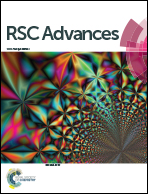Computational study of the working mechanism and rate acceleration of overcrowded alkene-based light-driven rotary molecular motors†
Abstract
In recent years, much progress has been made in the design, synthesis and operation of light-driven rotary molecular motors based on chiral overcrowded alkenes. Through consecutive cis–trans photoisomerization and thermal helix inversion steps, where the latter dictate the overall rate of rotation, these motors achieve a full 360° unidirectional rotation around the carbon–carbon double bond connecting the two (rotator and stator) alkene halves. In this work, we report quantum chemical calculations indicating that a particularly fast-rotating overcrowded alkene-based motor capable of reaching the MHz regime, can be made to rotate even faster by the substitution of a rotator methyl group with a methoxy group. Specifically, using density functional theory methods that reproduce the rate-limiting ∼35 kJ mol−1 thermal free-energy barriers shown by the methyl-bearing motor with errors of ∼5 kJ mol−1 only, it is predicted that this substitution reduces these barriers by a significant 15–20 kJ mol−1. This prediction is preceded by a series of benchmark calculations for assessing how well density functional theory methods account for available experimental data (crystallographic, UV-vis absorption, thermodynamic) on the rotary cycles of overcrowded alkenes, and a detailed examination of the thermal and photochemical reaction mechanisms of the original motor of this type.


 Please wait while we load your content...
Please wait while we load your content...